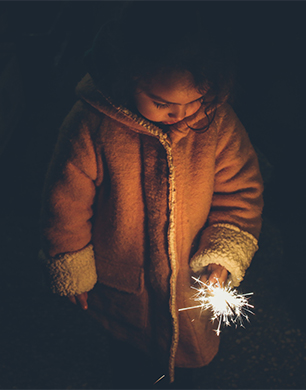 Children’s smaller bodies cause them to lose heat rapidly, making them more susceptible the colder winter weather. However, since they’re still developing, most kids won’t realise this for themselves, meaning it falls on the shoulders of parents to keep them protected from the cold.
Children’s smaller bodies cause them to lose heat rapidly, making them more susceptible the colder winter weather. However, since they’re still developing, most kids won’t realise this for themselves, meaning it falls on the shoulders of parents to keep them protected from the cold.
From babies and toddlers, to young children and teenagers, keeping your children well wrapped over the festive period is vital to their health. Whether you’re going for a stroll to the park with your baby or are making a quick trip to the local supermarket with your child, the cold weather can be a cruel mistress so, just because you feel nice and warm, that doesn’t necessarily mean your child does too.
If you’re stuck for ideas on how to dress your children effectively over winter, and are looking for both substance and style, then look no further. In this article, we outline some key tips to ensure your children not only look their best over the winter period, but stay nice and toasty as well.
- Layer it up.
The general rule of thumb – according to the American Academy of Pediatrics – is to put babies and children in one more layer of clothing than an adult would wear in the same conditions. The main reason for this is because the pockets of air that form between clothing layers trap heat, keeping kids nice and warm.
Doing so also offers flexibility; if you’re child starts to get too hot, during transit for instance, rather than having to be too hot with an extra layer or too cold with one less, removing one layer keeps the temperature just right.
Make sure you don’t go overboard with the layering though – it could actually leave your child feeling colder as a result. This is because extra layers cause children to sweat, making their clothes wet and allowing the cold winds to bring their temperature down.
When it comes to buying said layers, there are three key ones to think about: base layers are designed to wick moisture and are typically the first layer located right next to your child’s skin; middle layers – like wool, down or fleece – go over the base layer and are designed to insulate; outer layers, such as breathable waterproof jackets, protect children from the rain, snow and wind.
- Cotton control.
If you know it’s raining or snowing outside, avoid dressing your kids in cotton. Jeans and other types of cotton absorb rain, snow and sweat which, as mentioned earlier, will only leave your children feeling damp and cold as a result.
If you’re wanting a day out in the snow, or are hoping to head out on a brisk winter walk, pick a sporty or super-cute fleece option for your child instead. Not only will they feel better, they’ll also look better, perfectly primed and ready for a family-in-the-snow photoshoot.
- Heads, fingers, knees and toes.
Ok, so you don’t need to worry about the knees so much but, according to kidshealth.org, protecting your child’s head, face, ears, hands and feet is vital over the winter months, since these areas are the most susceptible to frostbite.
You know what kids are like, after all – give them some snow and they will either build a snowman or have a snowball fight. It’s inevitable.
Therefore, protect their poor skin from the extremities by wrapping them up warm. Non-cotton socks, hats, waterproof gloves, waterproof boots and scarves are all key clothing accessories to keep your children feeling toasty even on the coldest of days. If you want to go all out, you could even use a pair of earmuffs or a facemask for that extra bit of protection.
<’gucci-image.jpg’>
- Clothes a bit tight?
Just because you have a favourite Ralph Lauren top or pair of Gucci trainers you love seeing your child dressed in, if it’s too small for them, don’t force them to wear it. Skin needs room to breathe and feet need room to wiggle – any clothing that is too tight can limit blood circulation, leaving your child feeling a lot chillier as a result. Looking good shouldn’t come at the cost of your child’s health.
- Preparation is key.
The weather can be an incredibly cruel, unpredictable mistress, so preparing for the worst is key. In case your child decides they suddenly want to jump in a giant puddle, or make as big a snow angel as possible, pack a dry bag filled with extra clothes to keep them warm after they’re done playing.
Having an extra pair of gloves, socks or pants handy can never hurt, but your child isn’t going to remember them themselves. You’re going to need to do it for them.

